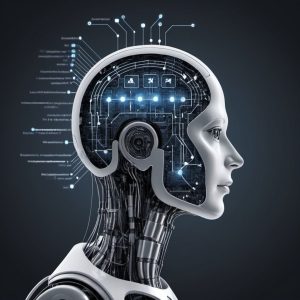
With the increasing use of AI, I wanted to look at the risks and challenges associated with AI Algorithms that organizations need to be aware of.
What is an Algorithm?
It can be described as a set of instructions or rules designed to perform tasks or solve problems. Algorithms can break down complex problems into manageable chunks in order to achieve the desired outcome. One example of where algorithms are used daily by a large portion of the worlds population is with GPS navigation apps. GPS apps use routing algorithms to determine the most efficient, cheapest (fuel wise) and quickest routes.
There are many different types of algorithms that can be applied depending on functions or use cases.
Now that we know what an algorithms is, we can list some of the benefits as:
- Helps Increase Efficiency and Productivity
- Improves Decision Making
- Pushes Advancements in Healthcare
- Helps with Predictive Analysis
- Can Drive Innovation and Creativity
- Improves Safety and Risk Reduction
- Allows for Enhanced Data Analysis
We know that Al Algorithms have many benefits but they also come with inherent risks and challenges.
Here are the Risks and Challenges:
- Bias and Fairness or Discrimination: As the Algorithms rely on training data provided by people, these can sometimes lead to discriminatory outcomes and can cause ethical concerns, reinforcing social inequalities.
- Deepfakes and Misinformation: They can create very realistic “fake” images, audio and videos which could spread misinformation.
- Lack of Transparency: Some models can be difficult to interpret, which raises concerns about how decisions are made.
- Job Displacement: It could lead to job losses which would impact livelihoods.
- Ethical Use: Poorly implemented systems could have repercussions in areas like healthcare, justice or employment. Some obvious concern areas are surveillance, facial recognition and autonomous weapons.
- Reliability and Robustness: Systems may fail to perform in conditions they were not trained for which would lead to unreliable behavior.
- Over Relying on AI: This could lead to lack of critical thinking which would have wide ranging implications.
- Implementation: They can be complex and require significant investments in infrastructure, organizational change management and talent.
What could be done to mitigate these risks and challenges?
- Public Education and Awareness: Awareness of the capabilities and limitations of AI could help manage expectations and build trust.
- Increasing Human AI Collaboration and User feedback: This will help identify issues and improve trust in the system.
- Careful Planning: Implementation requires extensive planning in order to maximize benefits.
- Upskilling and Reskilling of Workers: Investment in retraining will help workers adapt to new opportunities. AI should augment humans, not replace them.
- Algorithm Explainability: To ensure transparent and trustworthy systems
- Oversight and Regulation: Clear regulation and ethical guidelines.
- Data Privacy: Ensure best practices for data collation, secure storage and data access which would help ensure compliance.
- Data Auditing and Cleansing: Work to ensure the data is fair, representative and without discriminatory patterns to avoid biases.
In summary, organizations need to implement robust governance frameworks, promote transparency and explainability, ensure diverse and representative data sets and establish mechanisms for ongoing monitoring and evaluation.

